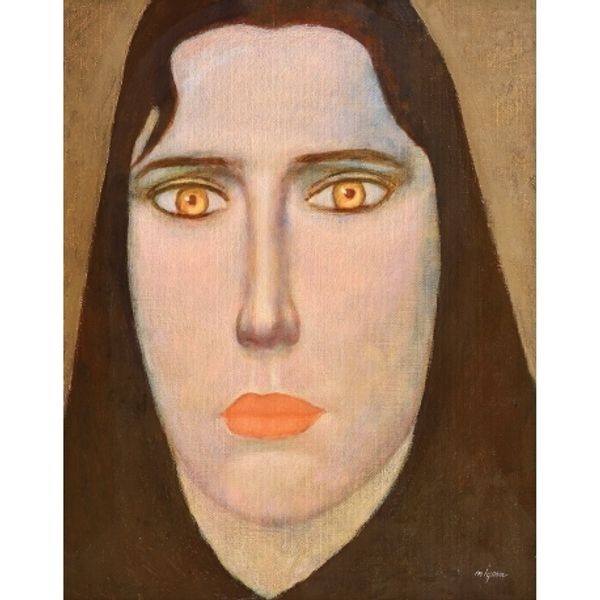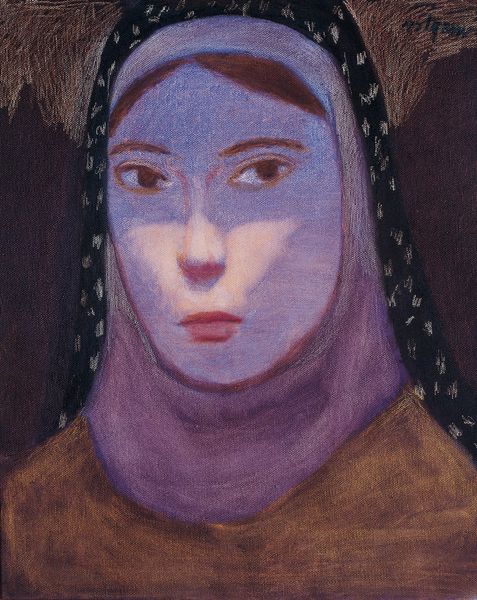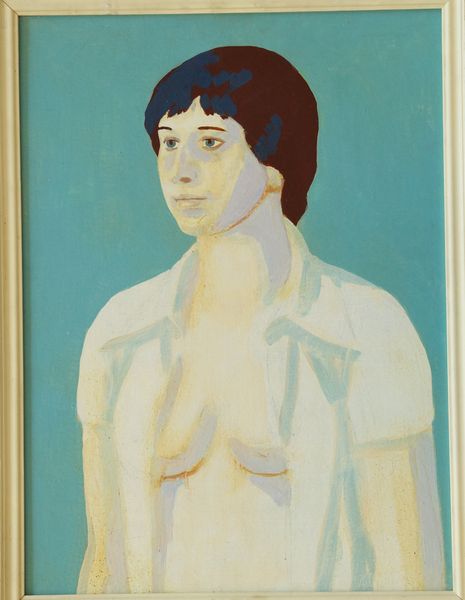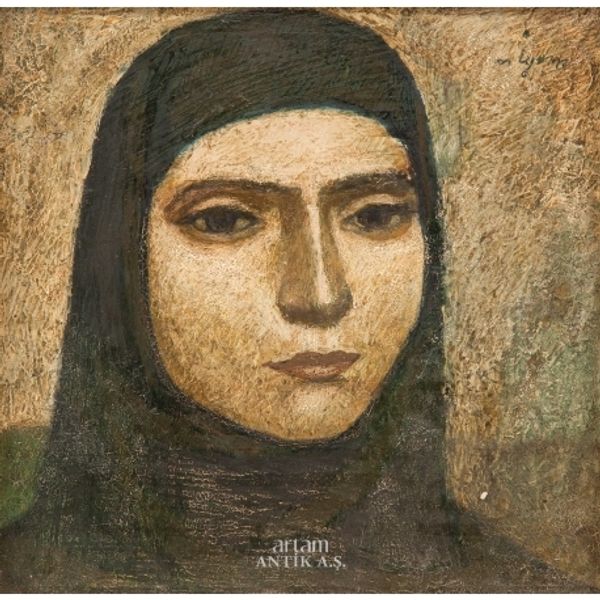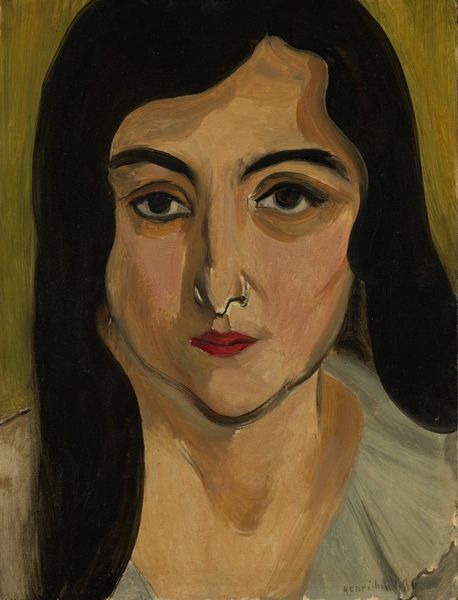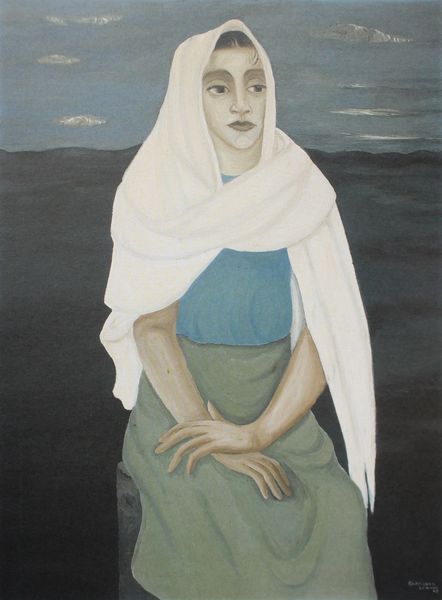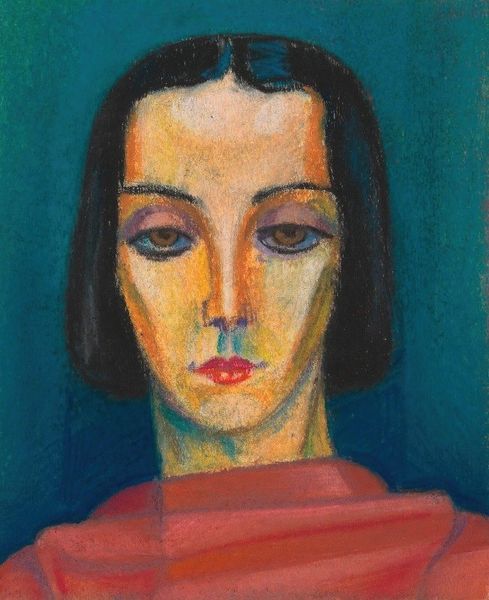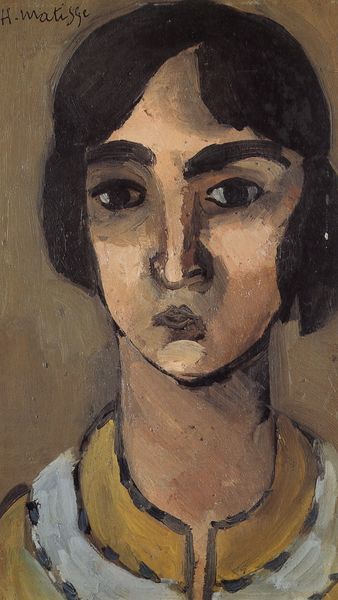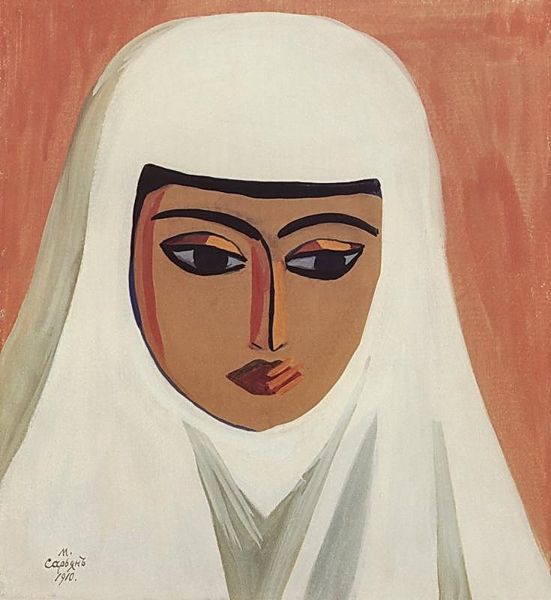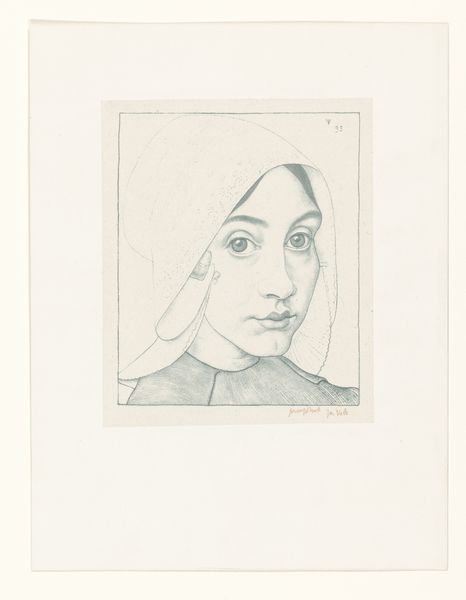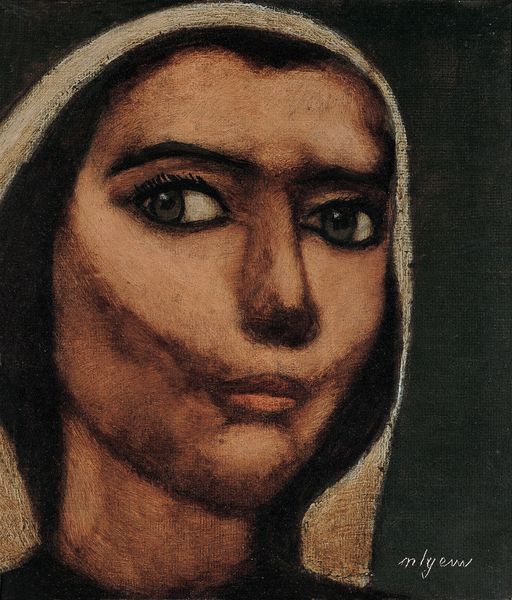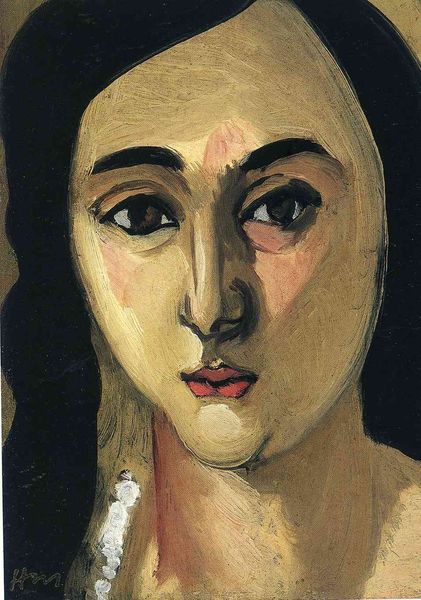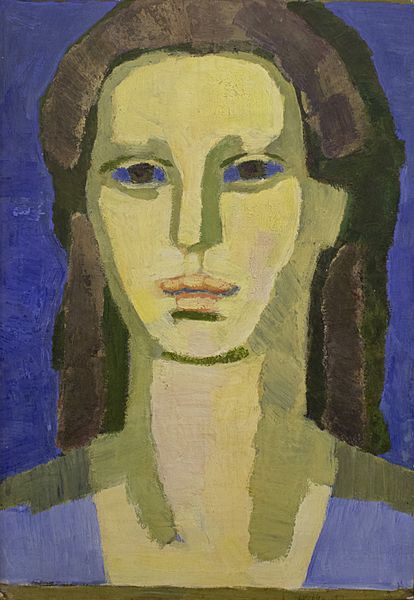
painting, oil-paint
#
portrait
#
painting
#
oil-paint
#
intimism
#
realism
Dimensions: 45 x 33 cm
Copyright: Nuri Iyem,Fair Use
Curator: This "Untitled Portrait" by Nuri Iyem is an oil painting exhibiting the artist's characteristic blend of realism and intimism. While undated, its style aligns with Iyem's broader body of work. Editor: I’m immediately drawn to the sitter's gaze. There's an intensity, but also a profound sense of serenity in her eyes. The white headscarf, coupled with her dark features, frames her face beautifully. It raises interesting questions about identity, visibility, and cultural representation. Curator: Indeed, Iyem’s paintings often featured women, and were clearly concerned with daily life in Anatolia, providing invaluable insights into the social and political status of women at that time. You'll find that Iyem depicted subjects traditionally excluded from canonical narratives of art history. Editor: Exactly. And beyond the figure herself, there's a real tension in the composition between the intimate scale of the portrait and the somewhat alienating landscape in the background. It makes me think about displacement and the negotiation of space within patriarchal structures. Curator: Well, the landscapes offer key cultural insight. You can consider, here, the importance of a realistic visual culture in nation-building and cultural diplomacy for Turkish artists like Iyem. The question of who or what is worthy of being memorialized in visual art speaks volumes about cultural norms. Editor: And, perhaps, also about resistance to those norms? The seeming simplicity of the painting belies the powerful message of defiance it may contain, implicitly challenging the invisibility imposed upon women. Do you think it might also speak to universal themes of womanhood, as well as culture specific ones? Curator: It definitely opens space to considering female realities across eras and regions, as it fits into a canon of work that focuses on the universality of human emotion through intimate genre portraiture. Editor: Yes, it invites us to really meditate on not just a single reading of the painting, but its historical positioning. To see it, not in isolation, but in conversation with other artistic movements and social developments. Curator: It makes one consider that a key message to find across all art movements, and this portrait delivers well on it, is how artists' innovative ways of seeing are the way that viewers develop innovative ways of thinking. Editor: Right, and that is why it is so important that we center the painting within intersectional, feminist frameworks. Because by re-evaluating this and the entire scope of art through that lens, we become responsible art stewards.
Comments
No comments
Be the first to comment and join the conversation on the ultimate creative platform.

